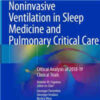Do State Regulations on Nurse Staffing Make a Difference in ICU Outcomes?
journals.lww.comIn the recent issue of Critical Care Medicine, Law and colleagues published an evaluation of the impact of changes in Massachusetts state regulations mandating that nurse staffing levels on critical care units be set at 1:1 or 1:2, and that they be based on patient acuity tools. These regulations took effect in academic medical centers in March 2016. Law and colleagues’ study used databases and bench-marking systems to examine about 30,000 ICU admissions in six academic ICUs in the state and about 570,000 ICU admissions in 114 medical centers outside Massachusetts. Measurements were taken at three points in time in the year before the legislation was announced, the year before it took effect, and the year afterward. The authors took into account that the patient populations in different ICUs vary, and that there can be overall trends in patient care over time that affect at least four outcomes: central line–associated bloodstream infections (CLABSIs), catheter-associated urinary tract infections (CAUTIs), hospital-acquired pressure ulcers, and falls with injury.

















